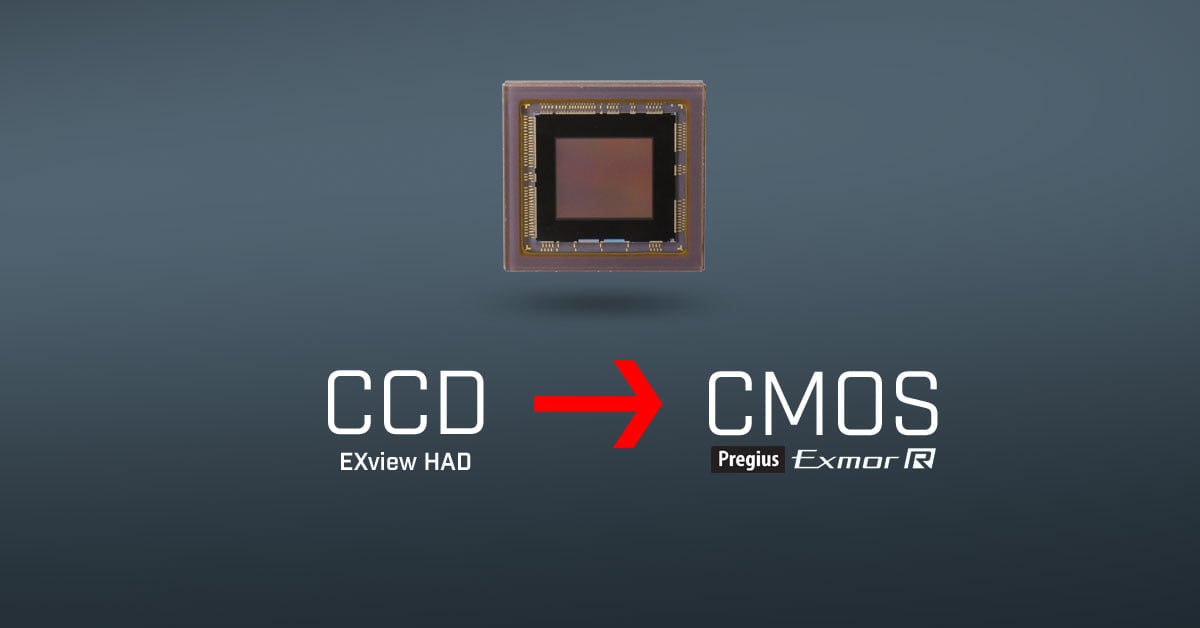Best Practices and Tips for Transitioning from CCD to CMOS Cameras

Why Transition to CMOS Image Sensors?
Since the launch of Sony’s revolutionary Pregius IMX174, CMOS image sensors have set benchmark for image sensor performance and value in machine vision. Their greater speed and quantum efficiency, and lower read noise enables you to achieve much higher throughput than is possible on CCDs. CMOS image sensors’ superior power efficiency and more compact packaging enables more efficient and compact camera designs.
What are the Options for Switching to CMOS?
The wide range of Pregius global shutter sensors available on FLIR Blackfly S and Firefly camera families means that in most cases, transitioning from CCD to CMOS will not require any changes to existing optical designs. New Pregius CMOS sensors are available which match the sensor size, resolution and pixel size of popular CCDs.
For customers who do not require global shutter or high frame rates, Sony’s back-side illuminated (BSI) rolling shutter Exmor R and Starvis sensors provide excellent low-light sensitivity at resolutions up to 20 MP. The small yet highly efficient BSI pixels enable these sensors to be smaller, supporting more compact and less expensive optics than are typically required by high resolution global shutter sensors.

Fig. 1. Pregius CMOS sensors are available in a wide range of resolutions, pixel sizes, and optical format.
What are the Advantages of CMOS Image Sensors?
The imaging performance of CMOS image sensors is vastly superior to CCD. The key advantages are:
- Higher quantum efficiency (QE)
- Much lower read noise
- Higher frame rates
- Immunity from blooming and smearing of bright highlights
- Higher dynamic range

Fig. 2. Sony Pregius sensors deliver large improvements across all performance criteria

Fig. 3. Sony Pregius sensors have much higher QE than CCD sensors. Combined with much lower read noise, they can reliably detect much lower intensity signals than CCDs making them better for low-light and high-speed imaging.
How can Application Performance be Enhanced by FLIR CMOS cameras?
The improved performance and capabilities of new CMOS image sensors combined with FLIR’s Blackfly S cameras enable system designers to update their systems with more sensitive, faster and higher resolution cameras at lower prices. For customers replacing FireWire cameras, both Gigabit Ethernet and USB 3.1 Gen 1 interfaces deliver much higher throughput and more supported ecosystem of cables and host systems. With these interfaces, it is possible to achieve additional cost-savings by shifting from large PC-based systems to compact off-the-shelf embedded computers.
Have a question?
or visit our Machine Vision homepage
Sensor-specific transition options
ICX204
ICX267

ICX274
ICX285
ICX424
ICX445
ICX625
ICX655
KAI0340
CCD to CMOS Transition Check-list
Does the system use custom optics or a require a very specific field of view?
Select a sensor with matching pixel size, resolution, and optical format
Adjust field of view by adjusting region of interest (ROI) size
Will the system benefit from additional resolution or speed?
Select a sensor which will enhance product differentiation and competitiveness
Does system use FireWire?
A switch to GigE or USB 3.1 Gen 1 is required
Does the system use FLIR FlyCapture2 SDK?
A switch to the newer FLIR Spinnaker SDK will be required
Most users find the process quick and straightforward; a large library of support resources is available for if required
Blackfly and Grasshopper3 customers can get started with Spinnaker very easily
Does system require specific mechanical dimensions?
Blackfly S cameras have the same 29mm x 29 mm x 29 mm dimensions and mounting hole positions as Blackfly and Flea cameras
Does system require specific electrical connections?
Flea and Grasshopper camera customers will need to switch to Blackfly S with its 6-Pin GPIO







